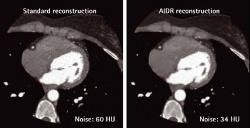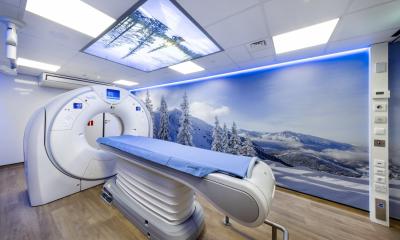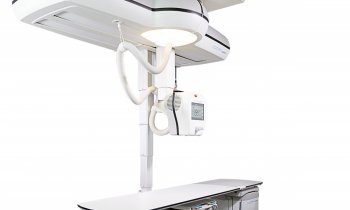Toshiba makes cardiac CT safer
To make today’s cardiac CT examinations even safer, Toshiba introduces new, revolutionary “Adaptive Iterative Dose Reduction (AIDR)” technology that lowers the radiation dose to the patient by up to 75% compared to conventional scanners.


The result is the best image quality at the lowest possible dose enabling clinicians to make better and more accurate diagnoses.
This innovative new technology is available with Toshiba’s Aquilion ONETM, AquilionTM Premium edition and all 64 detector row CT scanners and will be showcased at the European Society of Cardiology Congress that takes place in Stockholm, Sweden from 28 to 31 of August 2010
Adaptive Iterative Dose Reduction
Images processed with AIDR show improved image quality with lower noise levels in comparison to standard protocols using identical dose. Toshiba’s AIDR technology is adaptive, automatically calculating the optimized number of iterations for any acquisition, swiftly producing optimized image quality with minimal operator input.
Active Collimation
In addition to the new AIDR technology, the Aquilion ONE offers the possibility to scan larger areas such as a Chest Pain Triage scan using the helical scan mode. Due to the wide coverage of the Aquilion ONE and Premium state-of-the-art true 160 detector row ultra helical is a Toshiba-first technology to significantly reduce scan times; minimize contrast dose and lower risk of patient movement.
In conventional scanners, helical scanning is hampered by “over-ranging” resulting in extra radiation dose at the beginning and at the end of a helical scan. Toshiba’s Active Collimation eliminates over-ranging reducing the patient dose by up to 20%.
Less patient dose, better image quality
Further dose reduction is guaranteed by “SUREExposureTM 3D”. Dose savings of up to 40% can be achieved by precise automatic exposure adjustments correlated to the patient contour. Consistent image quality is assured for all patients, regardless of size.
AIDR, Active Collimation and SUREExposure 3D play an important role in reducing patient dose. A comprehensive training program ensures that operators become proficient in taking advantage of all the dose reduction technologies available for every scan, providing clinicians with maximum image quality at the lowest possible dose to the patient.
30.08.2010











